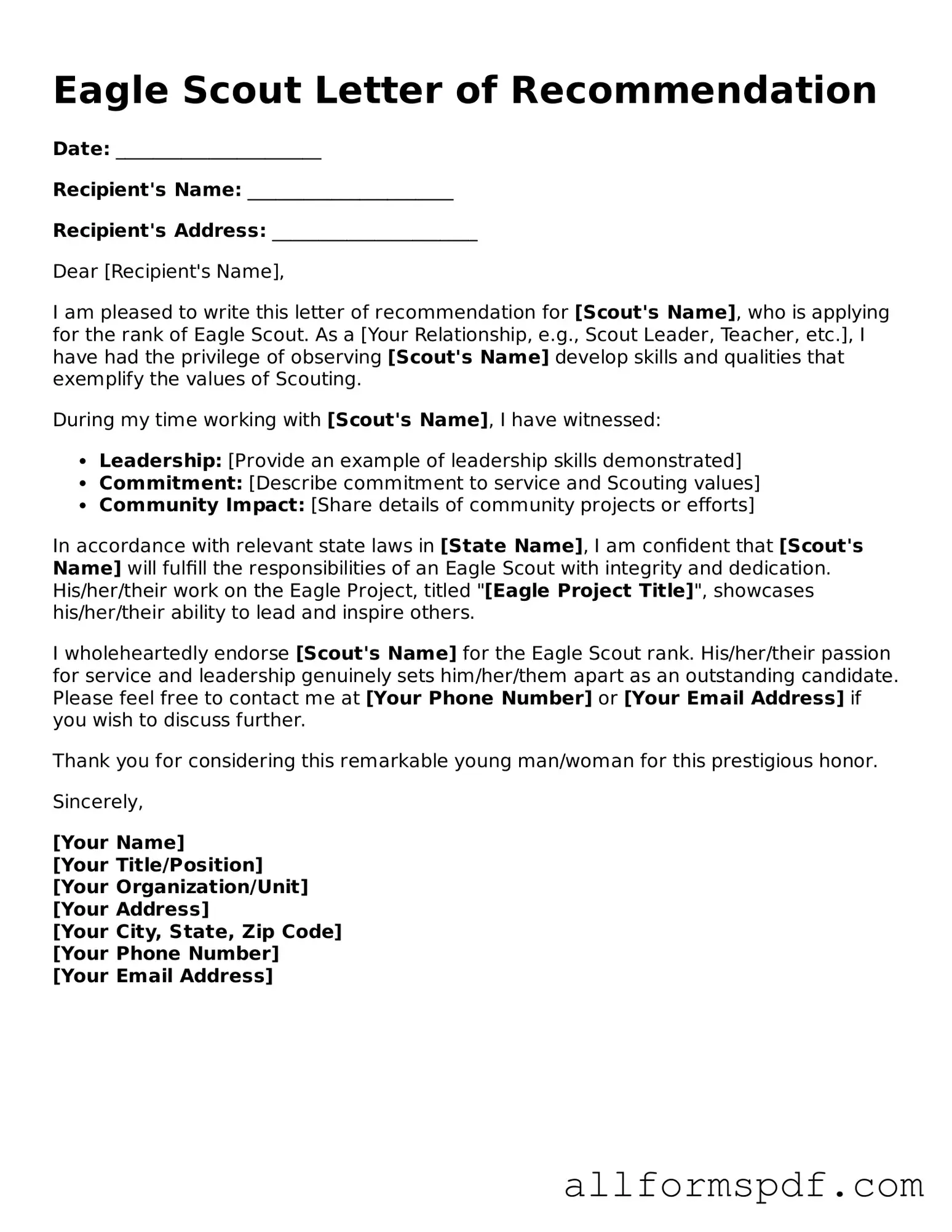Printable Eagle Scout Letter of Recommendation Form
The Eagle Scout Letter of Recommendation form is a vital document that supports a Scout's application for the prestigious Eagle Scout rank. This form allows individuals to provide insights into the Scout's character, leadership abilities, and commitment to the values of Scouting. Completing this form is an important step in recognizing the achievements and potential of young leaders in their communities.
Create My Eagle Scout Letter of Recommendation Now
